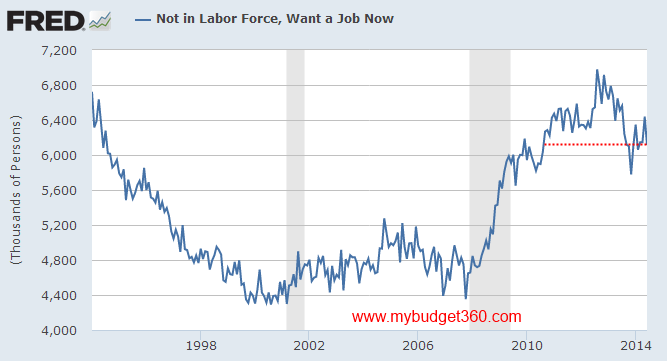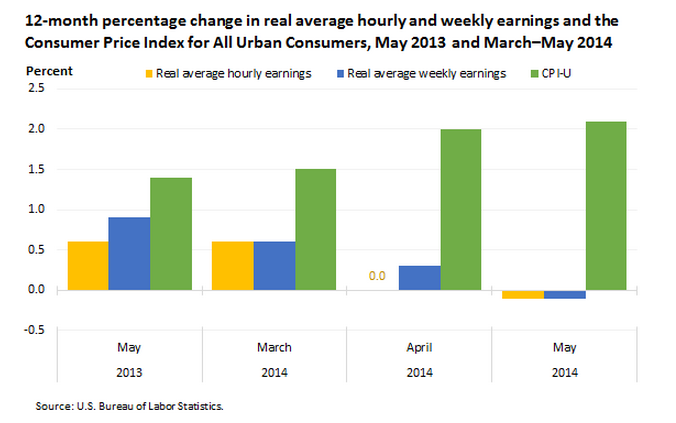Part-time working nation: The number of people working part-time for economic reasons jumped by 275,000 in the latest month of data. 6.1 million Americans not in the labor but want a job now.
- 0 Comments
The jobs report always comes out like a Black Box of economic data. While we added 288,000 jobs on the surface, digging deeper into the report we find that part-time work for economic reasons increased by 275,000 in the same month. Year-over-year inflation is eating away at purchasing power. The employment report was actually weak but on the surface one of the stronger reports we have had since the Great Recession ended. What is more troubling however, is the report is showing that the nation is settling into a comfortable zone where low wage jobs are becoming a more common part of economy. What also isn’t mentioned is that we have over 6.1 million Americans not in the labor force but that want a job right now. We’ve discussed the “not in the labor force†category before but this subset is very specific and shows that finding a job in the economy today isn’t all that easy, especially one that pays a livable wage. The stock market of course makes a record while other indicators like food stamp usage remain near peaks as well. Working part-time is becoming a much bigger part of our workforce.
Part-time workers surge
The headlines read that jobs added came in at 288,000 and the unemployment rate fell to 6.1 percent. Yet the Fed continues to hold onto a very aggressive monetary policy as if we were still in a full recession. Why? The reality is, the drop in the unemployment rate was largely driven by people dropping out of the labor force and also, a big jump in part-time workers that technically don’t count as unemployed.
It is interesting digging through the report to find what is actually going on but take a look at this:
Source:Â BLS
We added 288,000 jobs but we also had an increase of 275,000 people in the “part-time for economic reasons†category. This isn’t exactly a good sign. What it does show is the economy is becoming more comfortable with an army of low wage workers with very little benefits and poor wages. Since the Fed’s policy is causing more money to flow into the financial sector, real assets are being driven up in price and this is assisting to decline the standard of living for many Americans. It also helps to explain why Americans, half who do not own any stock, are largely missing out in the stock party bonanza since they have little after paying the bills to invest in the stock market.
It is interesting that we still have a massive amount of people not in the labor force but who are still looking for work. The headlines make it seem like we are back to pre-recession levels but look at this chart:
At the peak, we had about 6.9 million people in this category. Today we have 6.1 million Americans not in the labor force but desperately looking for work. This category hasn’t improved all that much and it also goes to show that pundits that think that the increase in the labor force is largely driven by older Americans retiring is not true. Other factors are pushing up this rate including an economy where there are not enough jobs and many jobs pay a very low wage.
Wages falling behind inflation
Inflation has a subtle way of making you poorer. Many Americans are simply feeling the impact of slow wage growth in the face of actual inflation. For example, take a look at wage growth in comparison to the overall inflation rate:
Year-over-year inflation is up more than 2 percent but real average weekly earnings are down. In other words, people are not keeping up with price hikes in fuel, food, housing, and healthcare. Part of this has to do with our growing army of part-time workers and those that have simply exited the labor force.
Young workers are largely falling behind at a time when they should be building their careers. Many are also saddled with incredible levels of student debt.
While adding 288,000 jobs is a good number, you have to dig deeper into the numbers. In the face of 275,000 more part-time workers that are stagnant in this category for economic reasons, how good was this jobs report? What does it say if real average earnings are also going down in a time when inflation is occurring especially in big budget items like housing?
We still have 6.1 million Americans not in the labor force wanting a job now so maybe we should show them this great report and ask them what they think.
If you enjoyed this post click here to subscribe to a complete feed and stay up to date with today’s challenging market!


 If you enjoyed this post click here to subscribe to a complete feed and stay up to date with today’s challenging market!
If you enjoyed this post click here to subscribe to a complete feed and stay up to date with today’s challenging market!